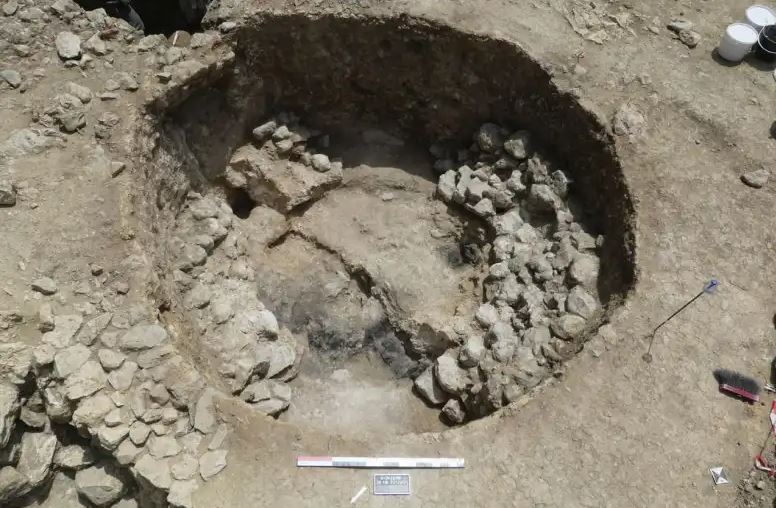One of the rarest ancient lime kilns was accidentally discovered by workers during demolition work on a detached house, and they immediately called the archaeological service. Archaeologists realized that the lime kiln was not only one of the rarest, but also one of the largest.
The discovery was made by chance, during construction work on a single-family house, in the neighborhood of Opilias, in the town of Donzère, in France. The ancient furnace in question is of the “corridor” type, which is one of the rarest forms, since there are less than 30 furnaces of this type known in ancient Gaul and also in the Mediterranean.
The human presence in the area where the lime kiln was discovered has been dated between the early and late imperial periods of antiquity. Throughout history, lime has been a fundamental building material.
The characteristics and operation of the lime kiln
The production of lime required exceptional craftsmanship and technical knowledge. The lime kiln was found near a limestone outcrop, from where limestone bricks were quarried for the production of lime. The limestone supply areas, which were also used during its production process, are located in the same area, within a radius of 10 km.
The lime kiln that was discovered has an imposing structure, with a circular combustion chamber, four meters in diameter. The walls of the chamber, reddened by the high temperature, still bear the marks of the tools used to excavate it. The lower part of the furnace is 2.70 meters deep, thus emphasizing the size of the structure even more.
The design of the kiln includes a central area where the fire burned, consisting of a partially paved corridor covered by three limestone slabs that form its base.
On the kiln’s peripheral platform, a portion of its last fired load was found, offering clues to the production process. These limestone bricks were arranged in such a way as to form a dome over the fire.
The flames reached temperatures between 900The C and 1000TheC, burning for many days and thus converting the limestone into lime. When the lime was ready, it was removed through the mouth of the lime kiln and removed through the passage, which was made to empty the kiln.
This corridor, 9.5 meters long, has a slight slope and six carved steps that allowed access to the upper circulation level, to the east.
The architecture of the furnace
It is believed that the upper level may have been a transport route for the distribution of lime to different construction sites in the area. The Donzère Kiln is estimated to have run multiple successive firings to meet the demand for lime for various construction projects of the time.

The efficiency and production potential of the kiln reflect the importance of lime for the architecture and construction activity of the period.
On the north side of the cremation chamber, a rectangular pit was discovered, separated by a carved stone from the rest of the structure. Although the exact function of the pit being compared has yet to be determined, it is thought to have been a storage area for the wood used in the burning process.
The recent archaeological discovery offers a comprehensive and coherent picture of the site. The combination of the study of the discovered objects and the ongoing scientific analysis is expected to more precisely determine the dating of the human presence in the area, as well as to relate the findings to previous research that has been done there.
Source: www.enikos.gr


